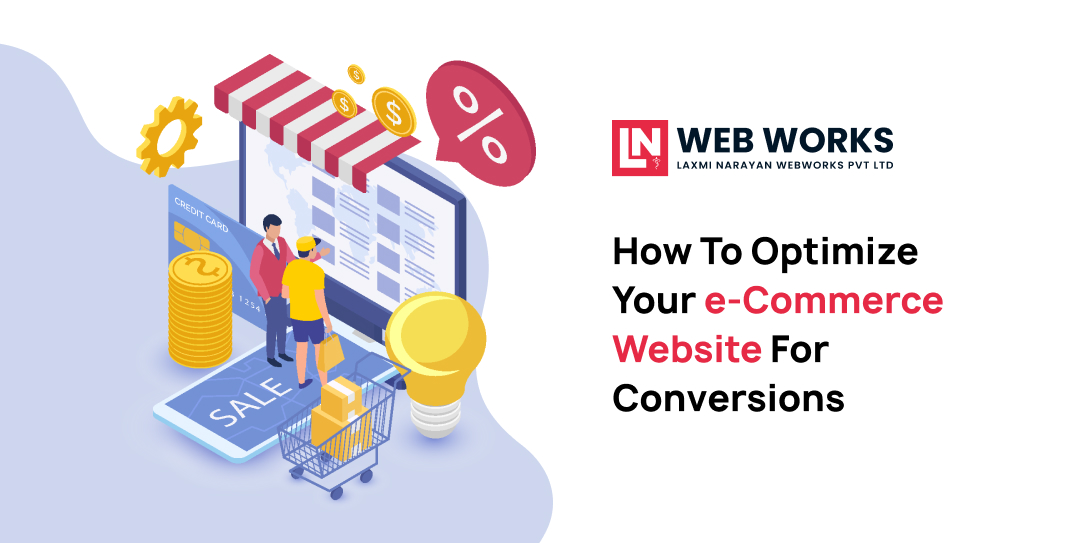
In the competitive ecommerce landscape, having an online store is just the beginning. The key to success lies in converting visitors into paying customers. Businesses in thriving markets like New York can gain a competitive edge by investing in custom web development in New York. This guide highlights actionable strategies to optimize your ecommerce website for maximum conversions.
1. Simplify Navigation
A streamlined navigation system makes it easier for users to browse your website and find what they’re looking for. Ensure your menu is intuitive and clearly categorized.
Tips for Effective Navigation:
- Use a sticky header for easy access to the menu.
- Categorize products logically (e.g., by type, price, or brand).
- Include a search bar with autocomplete functionality.
2. Enhance Your Call-to-Actions (CTAs)
Your CTAs should be clear, compelling, and strategically placed. Use actionable language that guides users toward the desired action.
Effective CTA Examples:
- “Add to Cart”
- “Shop Now”
- “Claim Your Discount”
Design Tip:
Use contrasting colors to make CTAs stand out.
3. Leverage High-Quality Visuals
Images and videos significantly influence purchasing decisions. Showcase your products with high-resolution images and engaging videos.
Must-Have Visual Features:
- 360-degree product views.
- Zoom functionality.
- User-generated content (e.g., photos from customers).
4. Streamline the Checkout Process
A complicated checkout process can lead to cart abandonment. Simplify the process to make it user-friendly and efficient.
Best Practices:
- Enable guest checkout options.
- Minimize the number of form fields.
- Provide multiple payment options.
5. Optimize for Mobile Users
With a significant portion of ecommerce traffic coming from mobile devices, ensuring a seamless mobile experience is essential.
Key Mobile Optimizations:
- Responsive design.
- Touch-friendly buttons.
- Fast loading times.
6. Implement Trust Signals
Building trust with your customers increases the likelihood of conversions. Showcase trust signals prominently on your website.
Examples of Trust Signals:
- SSL certificates.
- Customer reviews and ratings.
- Secure payment icons.
7. Use Personalization
Tailor the shopping experience to individual users to improve engagement and encourage repeat purchases.
Personalization Tactics:
- Display recently viewed items.
- Provide personalized product recommendations.
- Offer exclusive discounts for loyal customers.
8. Page Load Speed Matters
A slow-loading website frustrates users and increases bounce rates. Ensure your website loads quickly on all devices.
Speed Optimization Tips:
- Compress images.
- Use a content delivery network (CDN).
- Minimize the use of heavy scripts.
9. Utilize Data and Analytics
Track user behavior to identify pain points and areas of improvement. Analytics tools can help you optimize the customer journey.
Metrics to Monitor:
- Cart abandonment rate.
- Conversion rate.
- Average order value (AOV).
10. Leverage Social Proof
Showcasing positive customer experiences boosts credibility and encourages new visitors to make a purchase.
Social Proof Examples:
- Testimonials.
- Influencer endorsements.
- Real-time purchase notifications.
11. Offer Live Chat Support
Providing real-time assistance can help resolve customer queries and prevent them from leaving your website.
Benefits of Live Chat:
- Instant customer support.
- Improved customer satisfaction.
- Higher conversion rates.
Conclusion
Optimizing your ecommerce website for conversions requires a strategic blend of design, functionality, and customer-centric features. By implementing these tactics and collaborating with experts in custom web development in New York, you can create an ecommerce platform that drives results. LN Webworks specializes in delivering tailored solutions to help businesses thrive in the digital marketplace. Contact us today to transform your website into a high-performing ecommerce powerhouse!